
Photographer Marks Winter Solstice With Stunning Solar Halo
A photographer captured this beautiful solar halo to mark the winter solstice; the shortest day of the year in the Northern Hemisphere.

A photographer captured this beautiful solar halo to mark the winter solstice; the shortest day of the year in the Northern Hemisphere.
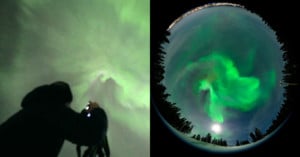
Wow. Just wow. Last night’s northern lights over Sweden were some of the most beautiful auroras I’ve seen. Such activity and fast-moving corona are not that common, so I’m glad I stayed up all night waiting.

During long periods of cloudy weather, it can be really frustrating as an astrophotographer to wait for the sky to clear up. Over the years, I’ve learned how to handle these long downtimes.
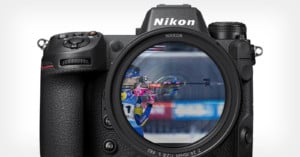
Nikon touts its new Z9 mirrorless camera as being able to capture motion faster than the human eye can see. One photographer just discovered that the camera is so fast that its burst mode can be used to capture speeding bullets.
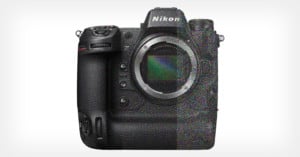
I just did a ISO comparison with the Nikon Z9 compared to the Nikon Z6 II and Nikon D850. I’ve been using my old D850 a lot for astrophotography and have been very pleased with its ISO performance.
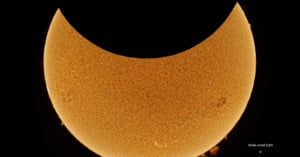
In the morning hours of June 10th, a "ring of fire" solar eclipse greeted sky observers in the northeast United States, northern Canada, Europe, northern Asia, Russia and Greenland. While most photographers captured single photos of the eclipse, Göran Strand decided to show the entirety of the rare eclipse from his backyard in Östersund, Sweden.
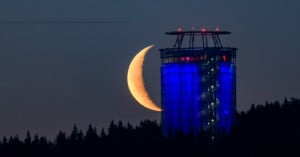
On July 27th, I was out taking photos and filming the moonrise behind a tower called Arctura here in Östersund, Sweden.

Last month, during the full moon of November, I planned and shot a photo of the full moon rising behind the 800-year-old Frösö church in Sweden.
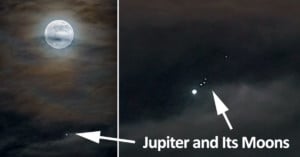
On April 10th, 2017, there was a special meeting in the night sky: the Moon was seen close to Jupiter and Jupiter's four largest moons, known as the Galilean moons. Photographer Göran Strand went out and captured the beautiful photo above of the entire group in a single frame.
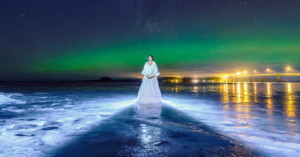
About a year ago, I was asked if I would like to do a wedding photography at night. The bride Erika had seen a photo of a moon halo I took earlier that year. In that photo, I had two friends that I ran into that night. They were out chasing the northern lights and I asked if I could take a photo of them together with the moon halo.
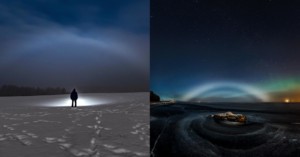
A month ago I had never seen a lunar fog bow; now I have seen three. I got to see my first lunar fog bow on December 17th, and last night I got to see two more of these elusive phenomena. We had lots of fog around the city of Östersund and since it was the night of the full moon, I drove around chasing locations where I could see this beautiful phenomenon.
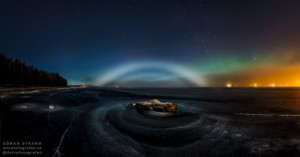
Over the years I've seen lots of different phenomena in the sky, but one that has been on my bucket list for quite some time is the very rare lunar fog bow. I've seen photos of it, but I've never managed to capture it in real life... until now.
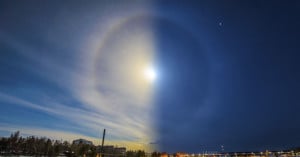
This unique and beautiful image shows sun and moon haloes side by side. There was perfect halo conditions in the sky yesterday in Östersund, Sweden, so Swedish astrophotographer Göran Strand went out and shot a photo of the 22° solar halo.
10 hours later, after day had turned to night, Strand returned to the exact same location and photographed the moon with its 22° lunar halo. The image above is a photo that blends the day and night images together with the halos perfectly matching.

If you've always dreamed of taking pictures of the northern lights, the video above will give you a small taste of what it's like. Swedish astrophotographer Göran Strand captured the behind-the-scenes footage recently when he drove out into the wilderness in the dead of night to chase auroras.

Astrophotographer extraordinaire Göran Strand created this neat composite image to explore an interesting 'what if?' scenario: What if your eyes could see the sun the way a Hydrogen Alpha Telescope does? What would a sunset look like then?
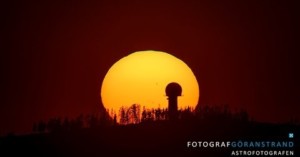
Swedish astrophotographer Göran Strand uploaded a time-lapse to YouTube today that is anything but your run-of-the-mill sunset lapse. For one, he's waited almost a full year to shoot this footage. For another, it was shot using a solar telescope, and so magnificently captures the sun in striking detail as it dips below the silhouette of the foreground landscape.
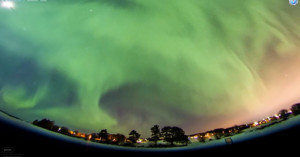
If you've always wanted to feast your eyes on the aurora borealis but haven't had the time or the money to travel to areas of the world where the light display occurs, photographer Göran Strand has a treat for you. He has created an immersive 360-degree panorama using time-lapse photographs shot during a particularly active aurora. The video lets you pan around in the scene, offering a small taste of what experiencing the northern lights feels like.
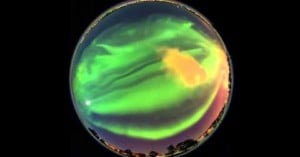
On March 16th, a massive solar flare at sunspot AR1692 -- a spot roughly the size of our quaint little planet -- sent a huge burst of solar wind headed our way. On March 17th, when it came into contact with the Earth's magnetic field, several hours of breathtaking aurora borealis resulted.
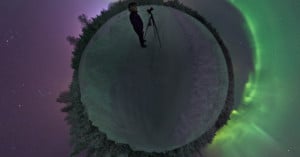
Swedish photographer Göran Strand created this amazing "little planet" photo (AKA a stereographic projection) that shows the Aurora Borealis overhead. He titled it "Planet Aurora".